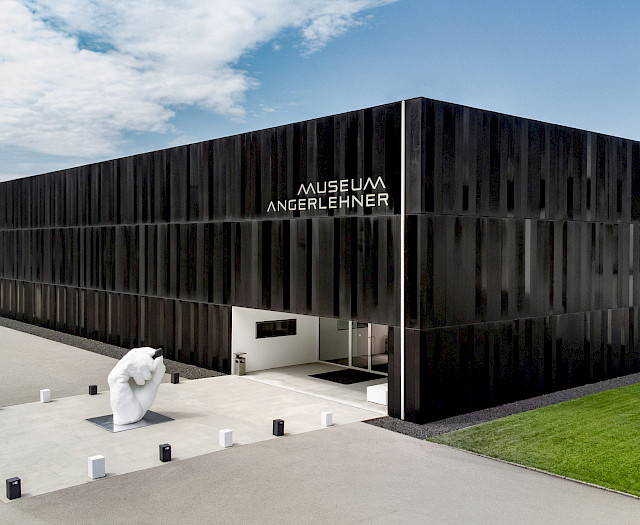BMW Art Guide by Independent Collectors
MUSEUM ANGERLEHNER
One of the most important venues for contemporary art in Austria

The privately operated Museum Angerlehner in Thalheim near Wels was opened in September 2013 and is one of the most important venues for contemporary art in Austria. The impressive exhibition hall with around 1,200 square meters as well as the gallery and the graphic rooms, together with the salon covering 800 square meters on the first floor, allow for a variety of forms of art presentation – from expansive and spectacular to focused and intimate. Over the past ten years, a considerable number of group and solo exhibitions have been held here – always accompanied by committed art education programs, curator-led tours, art talks, workshops, readings, concerts and much more.
At the heart of the museum is the Collection Angerlehner, which has grown over approximately 40 years, comprising around 3,000 artworks. A particular focus of the collection lies on Austrian painting over the last 50 years. Major names in this artistic development are represented as well as younger positions. Sculptures, graphic works, and artistic photography complement the collection.




Especially beautiful and inviting for lingering and viewing is the approximately sixty-meter-long viewable storage area: through a glass wall, visitors can gain diverse insights into the collection. Accumulated over forty years of enduring passion for contemporary art, these holdings encompass several thousand works and constitute one of the major and relevant collections of contemporary art in Austria. A glance at the individual display screens quickly reveals that painting is the predominant artistic medium. However, there are also extensive sections devoted to drawing and photography, as well as a variety of sculptural works – the latter, lovingly arranged by the collector, are particularly visible from outside the depot. The focus of the collection is on Austrian art after 1950, supplemented by numerous international positions. A walk through the depot is like a journey through the painting history of Austria over the past decades – of course, characterized by a personal selection and subjective emphases. You'll find (almost) all of them: the artists of the “Galerie nächst St. Stephan” as well as the "Neuen Wilden," the figurative positions of a middle and younger generation as well as new forms of abstraction and reduction. Past meets present, but also proximity meets distance. Thus, it is Angerlehner's ambition to promote the Upper Austrian scene through acquisitions and exhibition projects – he knows most of the artists personally, has visited their studios – but he also repeatedly buys art on his (art) travels, collects artworks from Germany, Eastern Europe, or even Mexico and India.




With the private museum, Angerlehner assumes a cultural-political responsibility that he is not obliged to take on, but one that he gladly executes: to promote the artists of the country and to share his passion for art with people, making artworks and exhibitions, events, and art education programs accessible in a low-threshold manner.